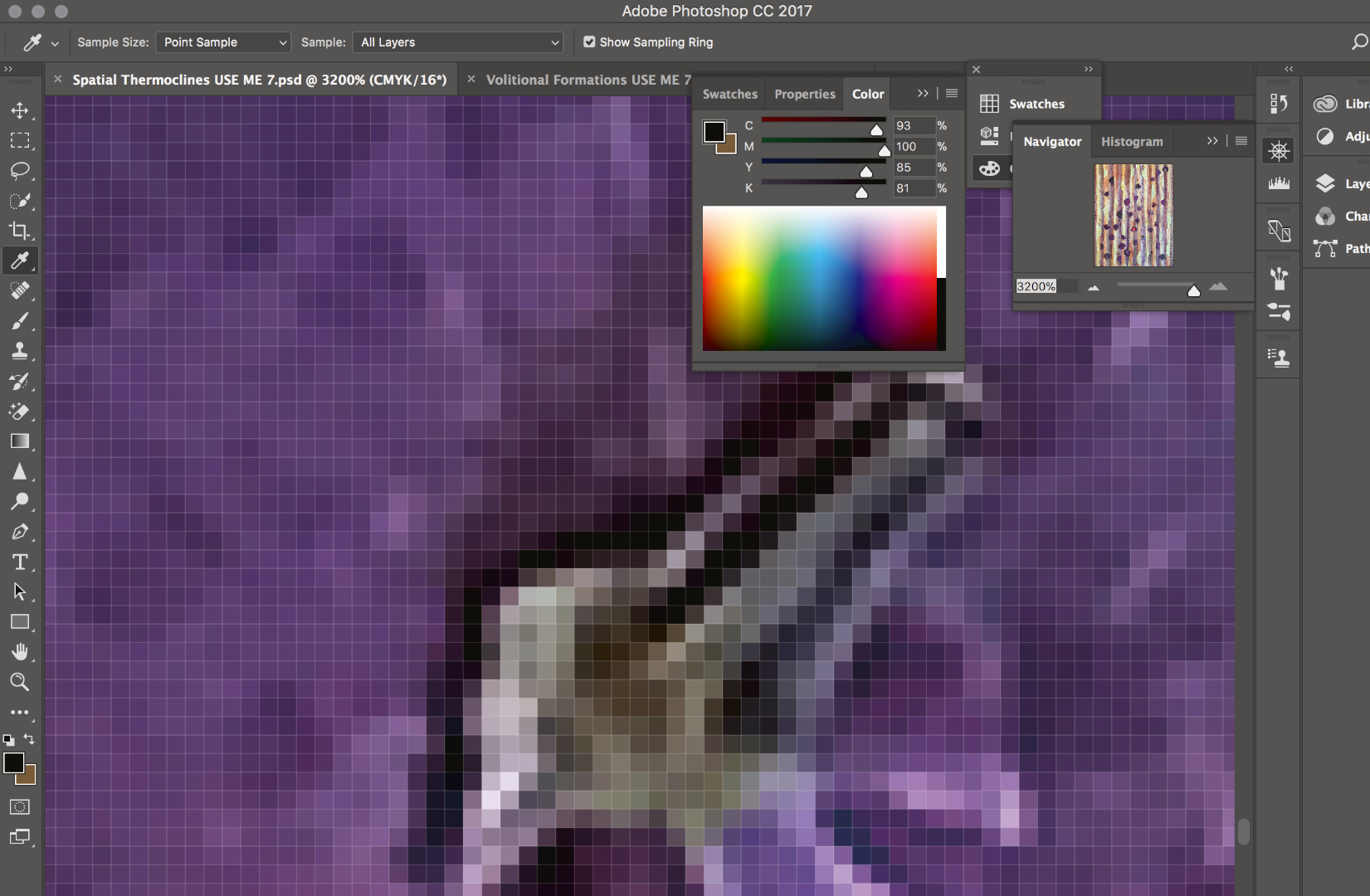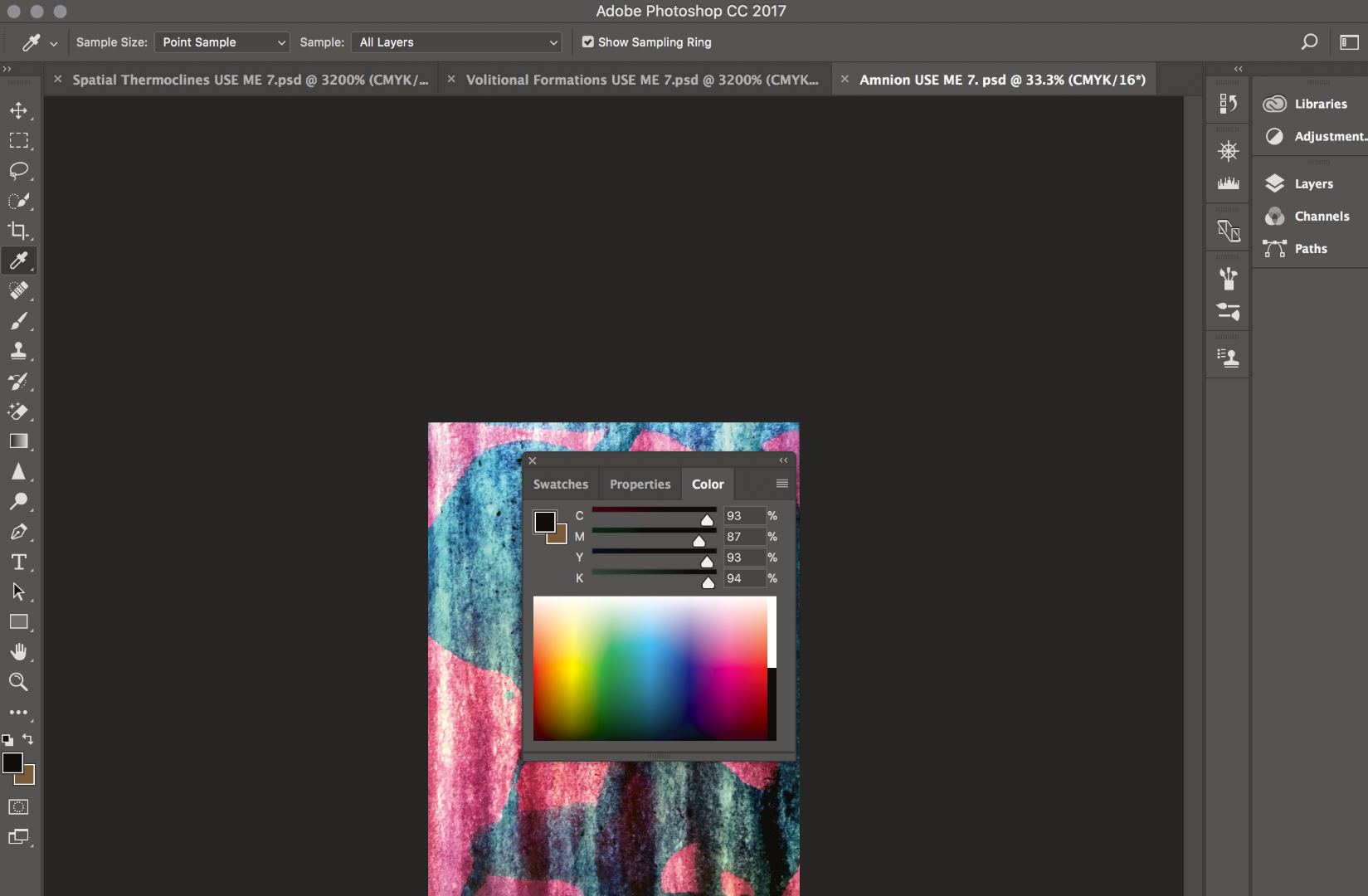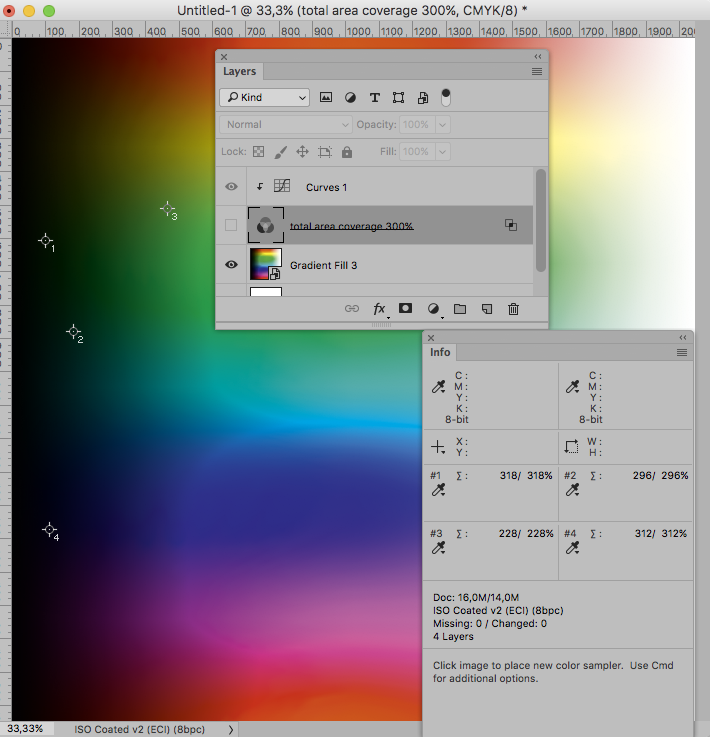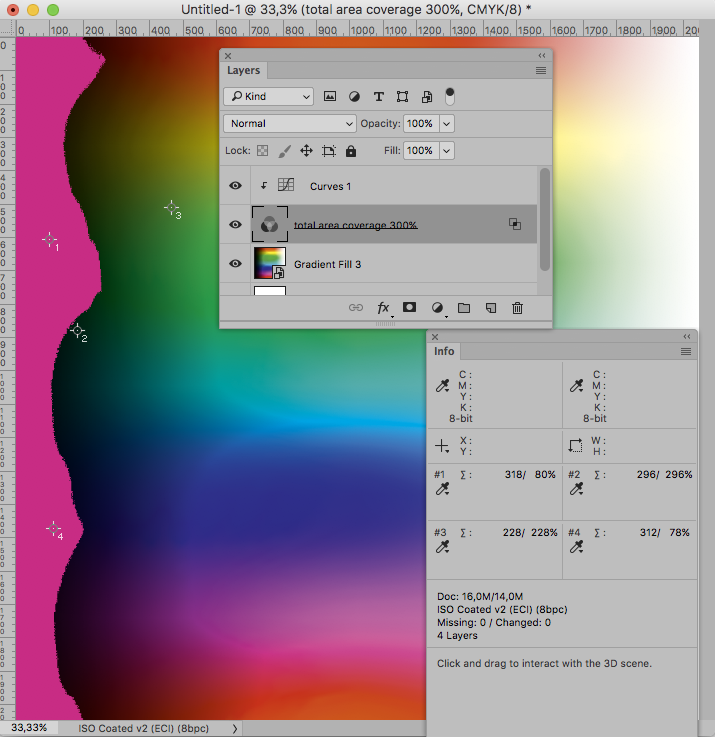- Home
- Photoshop ecosystem
- Discussions
- Re: What does "full black" mean in CMYK?
- Re: What does "full black" mean in CMYK?
Copy link to clipboard
Copied
Hi again,
finishing up my CMYK files. I've been advised here to do "full black" because of the weak blacks from the offset printer, but I don't know what this means in CMYK (not Grayscale). I'm not painting or messing with background or foreground colors, so I'm not doing swatches or picking colors. These are photographs of paintings that will be printed in a book. (And yes! I have the calibrator AND the printer/paper profile.)
Thanks again!
 1 Correct answer
1 Correct answer
Djuna, your ink levels are off the charts, way too high. The color in #7 adds up to 367% total ink! Since you're not telling what the profile is, I can't say how much you're over - but you're most certainly over.
Each CMYK profile has a specific ink limit. You cannot go over this! The ink will smear and run, and not dry properly. A very few profiles go up to 330%, but most stop around 300.
TAC is built into the profile, and a conversion into the profile is automatically limited. Do this the sensib
...Explore related tutorials & articles
Copy link to clipboard
Copied
This may help, but as always, let your printer tell you what he wants and what you need to do.
Copy link to clipboard
Copied
It just means 4-color black, as opposed to black plate only (which is used for text and other overprinted elements).
Every CMYK profile (corresponding to a certain press/paper/ink) has a total ink limit, above which you get smearing and drying problems.
For ISO Coated v2 300% (eci), which is a common standard in Europe, the numbers are 78-68-58-94. These relative percentages add up to the deepest possible neutral black. Text, on the other hand, would be printed 0-0-0-100.
Any RGB 0-0-0 black will convert to max ink in any given CMYK profile. This will always be safe. But if you edit numbers in CMYK, you need to be careful to not exceed the limit, known as Total Area Coverage, TAC.
Copy link to clipboard
Copied
If you work in RGB and have the correct printer profile, you will get rich black when converting to CMYK.
Copy link to clipboard
Copied
Thanks! This is helpful.
I understand the numbers. What I still don't understand is something very basic: how to check the numbers, short of eye dropping each pixel. I converted to CMYK early and edited there (not knowing otherwise), so is there a way to check that the already edited files don't have blacks that exceed the ink limit? I just sampled some of the black pixels in one file, and the numbers are high; it seems like they would exceed the ink limit. Is there a way to universally apply this black setting/limit? I don't think it's a swatch, since I"m not painting or working with background...
Copy link to clipboard
Copied
I converted to CMYK early and edited there
Why did you do that?
Which CMYK Space did you use?
Does creating a swatch universally apply those numbers to each black pixel?
No, Photoshop is not a vector oriented application like Illustrator.
And what do you even mean by »black pixel«? 0-0-0-100 or »looks kind of black« or something else?
Please post a meaningful screenshot (including the pertinent Panels).
Copy link to clipboard
Copied

I converted to CMYK early because I was advised to edit in CMYK. I just edited in the printer profile, which is a CMYK profile.
Okay here is the file with some "black" pixels, actually purple, but high numbers of each color.
Copy link to clipboard
Copied
And another. 
Copy link to clipboard
Copied
By default Photoshop does not offer a TAC indicator (like Acrobat) but one can use a Channel Mixer and a Curves Layer to simulate one.


Copy link to clipboard
Copied
Djuna, your ink levels are off the charts, way too high. The color in #7 adds up to 367% total ink! Since you're not telling what the profile is, I can't say how much you're over - but you're most certainly over.
Each CMYK profile has a specific ink limit. You cannot go over this! The ink will smear and run, and not dry properly. A very few profiles go up to 330%, but most stop around 300.
TAC is built into the profile, and a conversion into the profile is automatically limited. Do this the sensible way - work in RGB, and convert to CMYK at the very end. This way you're safe. Doing it the way you do now is a disaster waiting to happen.
Copy link to clipboard
Copied
Japan Color 2001 Coated. I just looked up this:
total amount of the density is 350%.
So glad I asked !
Yes, I just didn't want to start over. I suppose I'll start over with this one file and see how far I get ![]()
Copy link to clipboard
Copied
I converted to CMYK early because I was advised to edit in CMYK.
Who gave you that pieces of advice?
What is the exact printer profile and what it its TAC?
Copy link to clipboard
Copied
If you don't want to start over see what the effect is of going back to RGB then to the right CMYK. Not ideal, but might work for you.
Find more inspiration, events, and resources on the new Adobe Community
Explore Now
